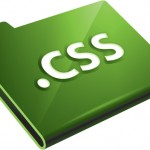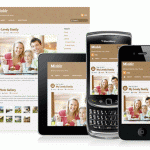Responsive Design: How To Use CSS3 Flex Box

“CSS offers several tools to help with site layout. Over the years we’ve worked mainly with floats, positioning, and margins, but let’s face it, most of us would like more. Fortunately css3 is giving us more tools for layouts. One of those tools is the flexible box.
A couple of weeks ago .net magazine published an article on The future of css layouts, in which they covered several new css3 layout modules. I’d like to work through some of them starting today with the flexible box layout module.
I’ve created a demo page illustrating some of the properties of the flexbox, though there’s not much to see in the demo that you can’t see from the images throughout this post. It’s there in case you want to play around with the source code.”
What is Responsive Web Design And How Can I Use It?

“Almost every new client these days wants a mobile version of their website. It’s practically essential after all: one design for the BlackBerry, another for the iPhone, the iPad, netbook, Kindle and all screen resolutions must be compatible, too. In the next five years, we’ll likely need to design for a number of additional inventions. When will the madness stop? It won’t, of course.
In the field of Web design and development, we’re quickly getting to the point of being unable to keep up with the endless new resolutions and devices. For many websites, creating a website version for each resolution and new device would be impossible, or at least impractical. Should we just suffer the consequences of losing visitors from one device, for the benefit of gaining visitors from another? Or is there another option?
Responsive Web design is the approach that suggests that design and development should respond to the user’s behavior and environment based on screen size, platform and orientation. The practice consists of a mix of flexible grids and layouts, images and an intelligent use of CSS media queries. As the user switches from their laptop to iPad, the website should automatically switch to accommodate for resolution, image size and scripting abilities. In other words, the website should have the technology to automatically respond to the user’s preferences. This would eliminate the need for a different design and development phase for each new gadget on the market.”



